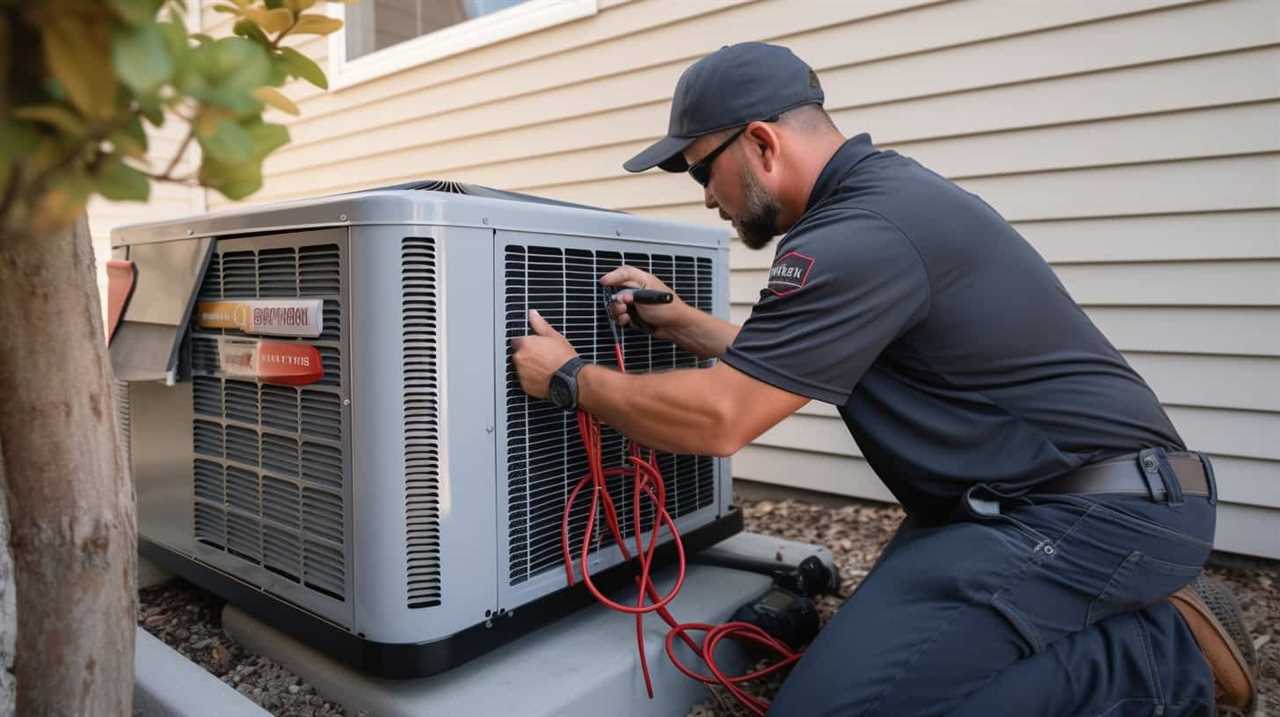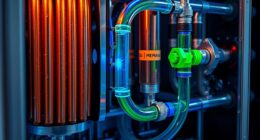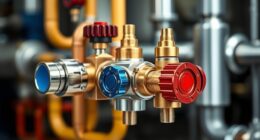We have all experienced the frustration of a heat pump that seems unable to meet our cooling or heating needs.
But what if there was a way to improve the efficiency of these systems?
In this article, we’re diving into the world of heat pump refrigeration cycles to explore the factors that impact their effectiveness.
From the role of evaporators and condensers to the influence of compressors and expansion valves, we’ll analyze the various components that contribute to optimal performance.
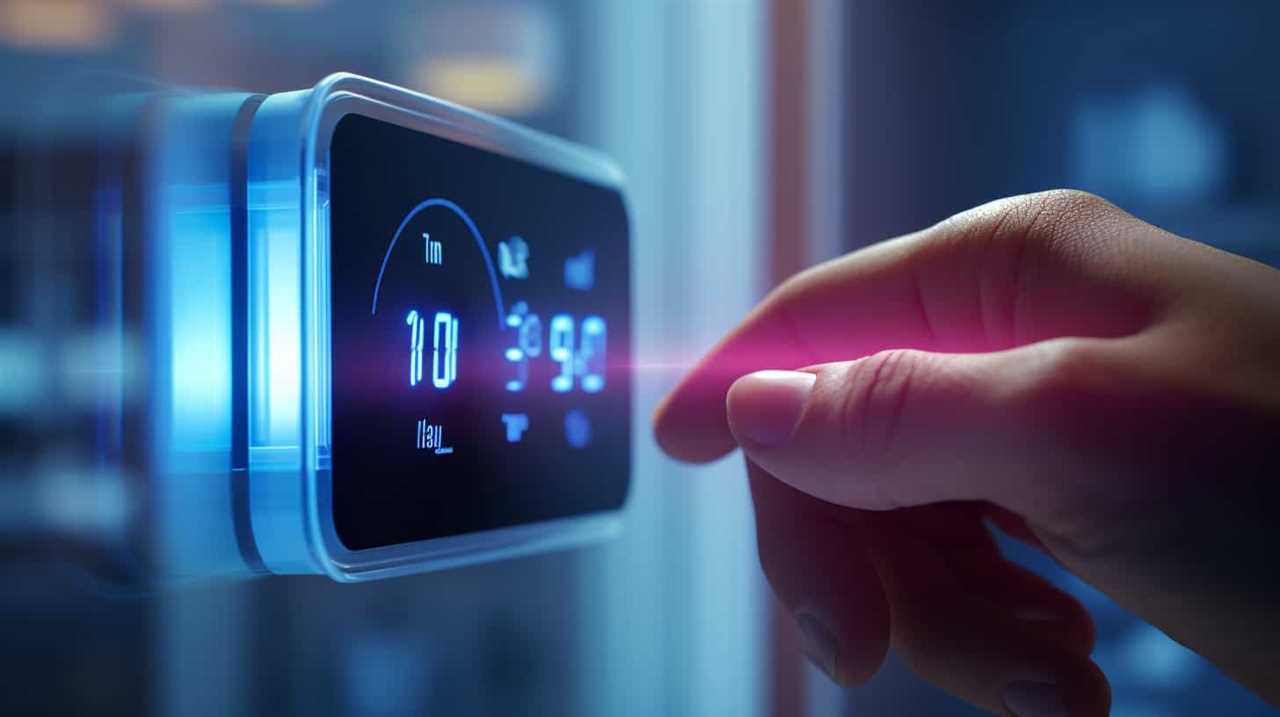
So let’s uncover the secrets to maximizing efficiency and serving your comfort needs.
Key Takeaways
- Heat pumps transfer heat from a low-temperature source to a high-temperature sink.
- Evaporators with larger surface areas and fins enhance heat transfer efficiency.
- Proper selection of refrigerant and refrigerant charge optimize performance.
- Analyzing expansion valve efficiency is crucial in optimizing heat pump systems.
The Basics of Heat Pump Refrigeration Cycles
We will start by discussing the basic principles of heat pump refrigeration cycles. Heat pumps operate by transferring heat from a low-temperature source to a high-temperature sink, using a refrigerant as the working fluid.
The evaporator, an essential component of the heat pump system, plays a crucial role in this process. It’s designed to absorb heat from the surroundings, which causes the refrigerant to evaporate. As the refrigerant evaporates, it absorbs a large amount of latent heat from the surroundings, resulting in cooling.
This cooled refrigerant is then compressed, raising its temperature and pressure. The subsequent condensation of the refrigerant releases the heat to the desired high-temperature sink.
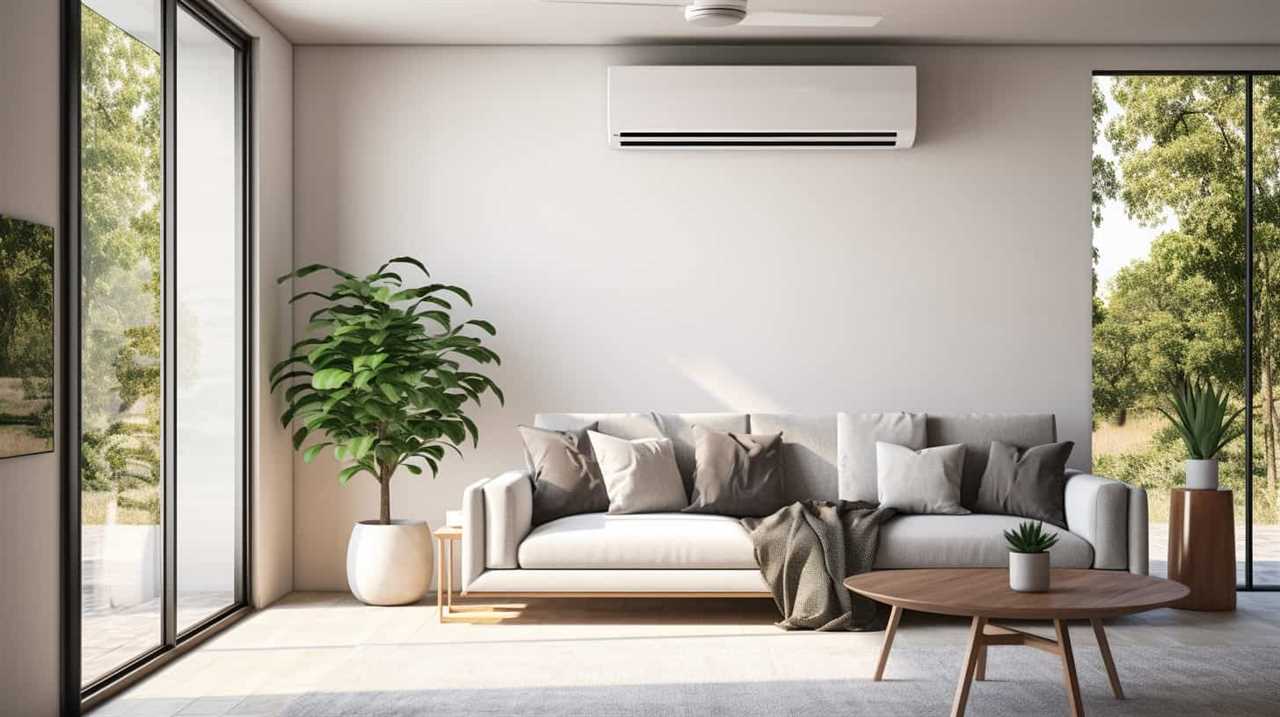
Understanding the role of evaporators in heat pump efficiency is vital, as it directly impacts the cooling and heating capabilities of the system.
Understanding the Role of Evaporators in Heat Pump Efficiency
Our understanding of evaporators’ role in heat pump efficiency is crucial in maximizing the cooling and heating capabilities of the system. The design of the evaporator plays a significant role in achieving optimal heat transfer efficiency. The evaporator is where the refrigerant absorbs heat from the surrounding environment, allowing it to evaporate and turn into a gas. This process is essential for cooling or heating a space effectively.
To enhance the heat transfer efficiency, evaporators are designed with larger surface areas and fins to increase contact with the surrounding air or fluid. Additionally, the selection of the appropriate refrigerant and the proper refrigerant charge in the evaporator are crucial factors in optimizing the heat pump’s performance. Understanding and optimizing evaporator design and heat transfer efficiency are vital steps in improving the overall efficiency of a heat pump system.
Transitioning into the next section, let’s now examine the impact of compressors on heat pump performance.
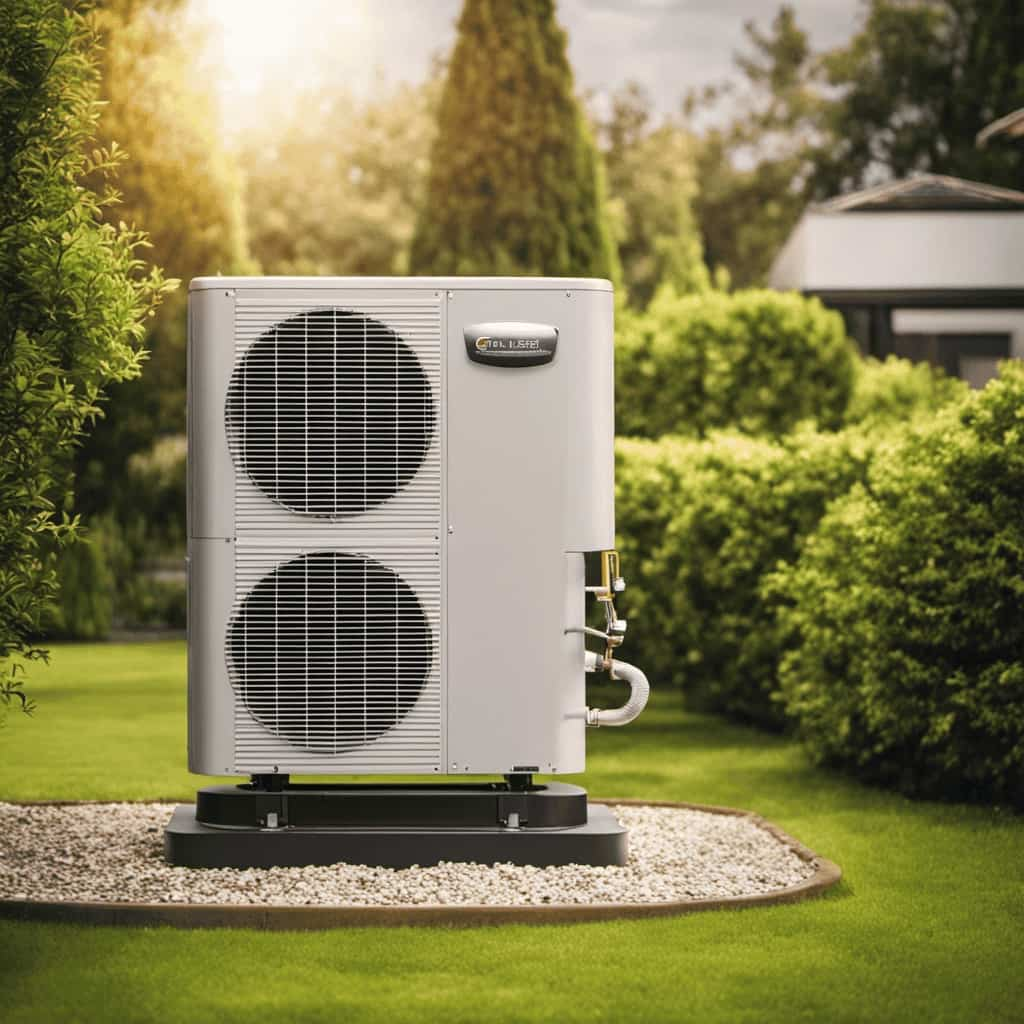
Examining the Impact of Compressors on Heat Pump Performance
When examining the impact of compressors on heat pump performance, it’s important to consider factors such as efficiency, capacity, and control strategies.
Compressor design plays a crucial role in determining the overall efficiency of a heat pump system. An optimally designed compressor ensures minimum energy consumption and maximum heat transfer.
Additionally, the size of the compressor has a significant impact on heat pump performance. An oversized compressor may result in excessive power consumption, while an undersized compressor may lead to insufficient heat transfer.
Control strategies, such as variable speed drives, can further enhance the efficiency of the compressor by adjusting its operation to match the heat load requirements.

By carefully examining compressor design and considering the impact of compressor size, heat pump performance can be optimized, resulting in improved energy efficiency and cost savings.
Moving on to the next section, it’s essential to understand the significance of condensers in heat pump refrigeration cycles.
The Significance of Condensers in Heat Pump Refrigeration Cycles
Condensers play a crucial role in the efficiency of heat pump refrigeration cycles by facilitating the transfer of heat from the refrigerant to the surrounding environment. The significance of heat transfer in condensers can’t be overstated, as it directly affects the overall performance of the heat pump system.
The design of the condenser is key in maximizing the heat transfer process, ensuring that the refrigerant releases its heat to the surroundings effectively. Optimal condenser design involves considerations such as the surface area for heat exchange, the type of refrigerant used, and the flow rate of the refrigerant.

By efficiently transferring heat, condensers enable the heat pump system to operate at its highest efficiency, ultimately providing optimal cooling or heating performance.
Analyzing the efficiency of expansion valves in heat pump systems further enhances our understanding of the overall performance of these systems.
Analyzing the Efficiency of Expansion Valves in Heat Pump Systems
When considering the efficiency of expansion valves in heat pump systems, it’s important to analyze their performance in regulating the flow of refrigerant from the high-pressure side to the low-pressure side. We must assess the efficiency of these valves in terms of the pressure drop across the valve and the resulting flow rate of the refrigerant.
Additionally, it’s worth exploring alternative valve options that may offer improved efficiency, such as electronic expansion valves or thermostatic expansion valves.
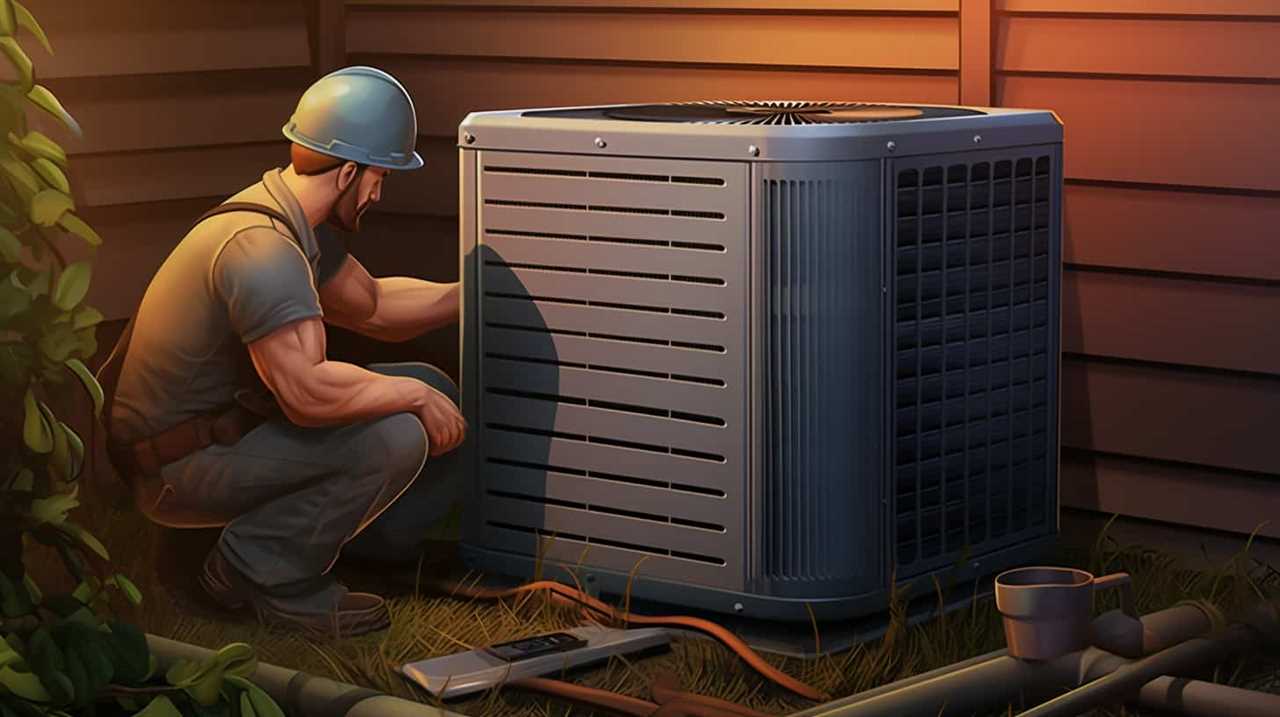
Expansion Valve Efficiency
We will evaluate the effectiveness of expansion valves in heat pump systems by analyzing their efficiency. Expansion valves play a crucial role in the refrigeration cycle, as they control the flow of refrigerant from the high-pressure side to the low-pressure side. Understanding expansion valve performance is essential for optimizing heat pump systems and ensuring energy efficiency.
Here are five key factors to consider when assessing expansion valve efficiency:
- Pressure drop across the expansion valve
- Superheat at the outlet of the expansion valve
- Subcooling at the inlet of the expansion valve
- Proper sizing of the expansion valve
- Valve responsiveness and accuracy in maintaining the desired evaporator pressure
Alternative Valve Options?
To enhance the efficiency of heat pump systems, we’ll analyze the effectiveness of alternative valve options by evaluating their performance in controlling refrigerant flow and optimizing energy usage.
Alternative valve designs have the potential to improve the efficiency of heat pump systems by enhancing the valve’s ability to regulate the flow of refrigerant. By utilizing advanced technologies and innovative designs, these alternative valves aim to overcome the limitations of traditional expansion valves.

One key area of focus is valve efficiency improvements, which can lead to better control over refrigerant flow rates and reduce energy consumption. By carefully selecting and implementing alternative valve options, heat pump systems can achieve higher levels of efficiency, resulting in reduced operating costs and improved performance.
This analysis will provide valuable insights for professionals in the field who are dedicated to serving others by delivering energy-efficient heat pump solutions.
The Influence of Refrigerants on Heat Pump Cycle Effectiveness
When considering the influence of refrigerants on heat pump cycle effectiveness, two crucial points come to mind:
-
Optimal refrigerant selection: This is essential because different refrigerants have varying thermodynamic properties that can affect the overall efficiency of the heat pump system. By selecting the right refrigerant, we can maximize the heat transfer capabilities of the system and improve its performance.

-
Environmental impact of refrigerants: This is a critical factor to consider, as certain refrigerants contribute to ozone depletion and global warming potential. It is important to choose refrigerants that have low environmental impact to minimize harm to the ozone layer and reduce greenhouse gas emissions.
Optimal Refrigerant Selection
As we consider the optimal refrigerant selection, we must explore the influence of different refrigerants on the effectiveness of the heat pump cycle. The choice of refrigerant plays a crucial role in determining the efficiency and performance of a heat pump system.
Here are five key factors to consider when selecting the optimal refrigerant for a heat pump:
-
Optimal refrigerant properties: The refrigerant should possess properties such as high thermodynamic efficiency, low global warming potential (GWP), and zero ozone depletion potential (ODP).
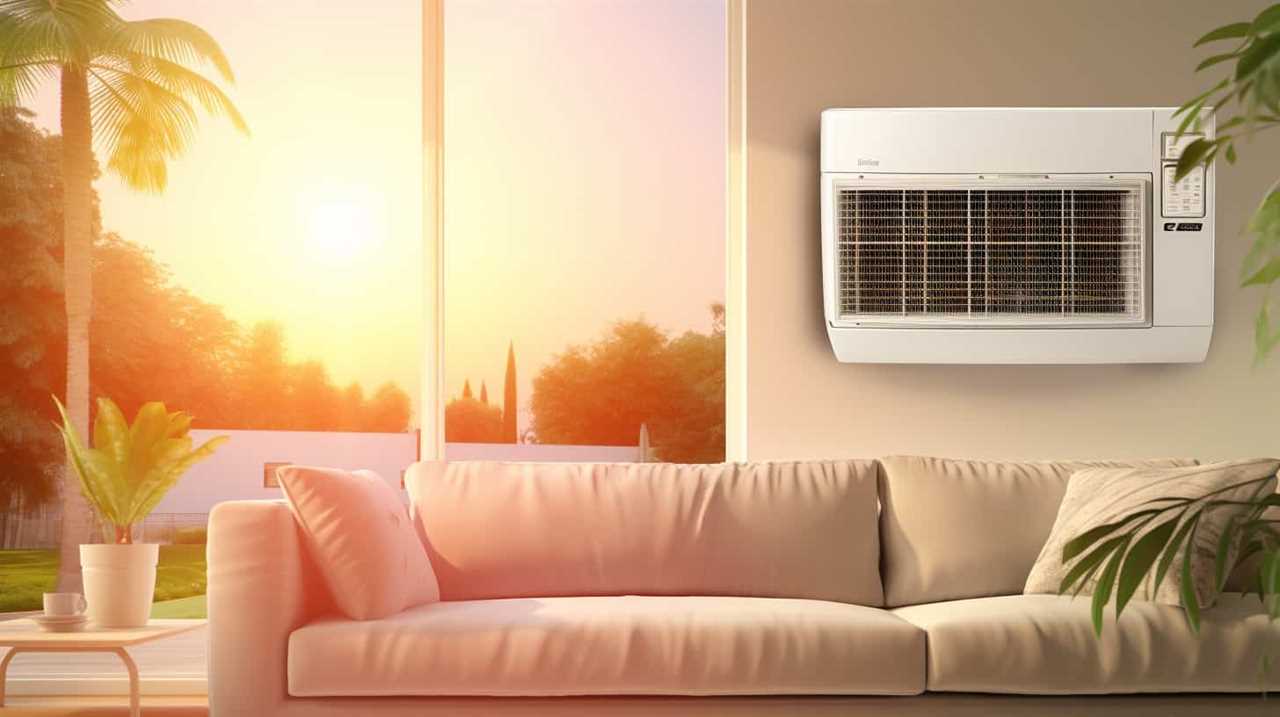
-
Refrigerant compatibility: The refrigerant should be compatible with the heat pump components, ensuring long-term reliability and minimizing the risk of system failure.
-
Safety considerations: The refrigerant should have low toxicity and flammability, ensuring the safety of both the users and the environment.
-
Availability and cost: The refrigerant should be readily available in the market at a reasonable cost, ensuring affordability and easy maintenance.
-
Environmental impact: The refrigerant should have minimal environmental impact, with a focus on reducing greenhouse gas emissions and promoting sustainability.

Environmental Impact of Refrigerants
How do different refrigerants influence the effectiveness of the heat pump cycle and what is their environmental impact? When it comes to heat pump cycles, the choice of refrigerant plays a crucial role in both performance and environmental sustainability. Different refrigerants have varying levels of efficiency and environmental impact due to their unique properties. For example, some refrigerants have high global warming potential (GWP), contributing significantly to climate change. To address these concerns, governments and regulatory bodies have implemented refrigerant regulations to promote the use of more environmentally friendly options. These regulations aim to reduce GWP and encourage the adoption of refrigerants with lower environmental impact. By considering the environmental impact of refrigerants and complying with regulations, we can ensure the effective operation of heat pump cycles while minimizing harm to the environment.
| Refrigerant | Efficiency (COP) | Environmental Impact |
|---|---|---|
| R-410A | 3.5 | High GWP |
| R-32 | 4.0 | Lower GWP, flammable |
| R-290 (Propane) | 3.8 | Low GWP, highly flammable |
| R-744 (CO2) | 4.5 | Low GWP, high pressure |
| R-1234ze (HFO) | 4.2 | Low GWP, low toxicity |
Comparing the Performance of Single-stage and Multi-stage Heat Pump Cycles
We will compare the performance of single-stage and multi-stage heat pump cycles to determine their efficiency. Here are five key points to consider when comparing these two types of cycles:
- Single-stage heat pump cycles have a simpler design and are generally more cost-effective.
- Multi-stage heat pump cycles offer improved efficiency by adjusting the capacity of the system to match the heating or cooling demands.
- Multi-stage cycles allow for better temperature control and can provide more precise comfort levels.
Single-stage heat pump cycles have a lower initial cost but may result in higher energy consumption in the long run. Multi-stage heat pump cycles have the potential for significant energy savings, especially in areas with varying temperature conditions.
Exploring Advanced Heat Pump Technologies for Improved Efficiency
To achieve improved efficiency, we’ll explore advanced heat pump technologies that utilize innovative designs and integrate cutting-edge components. These advanced technologies have the potential to significantly enhance the energy efficiency of heat pumps, making them more environmentally friendly and cost-effective.
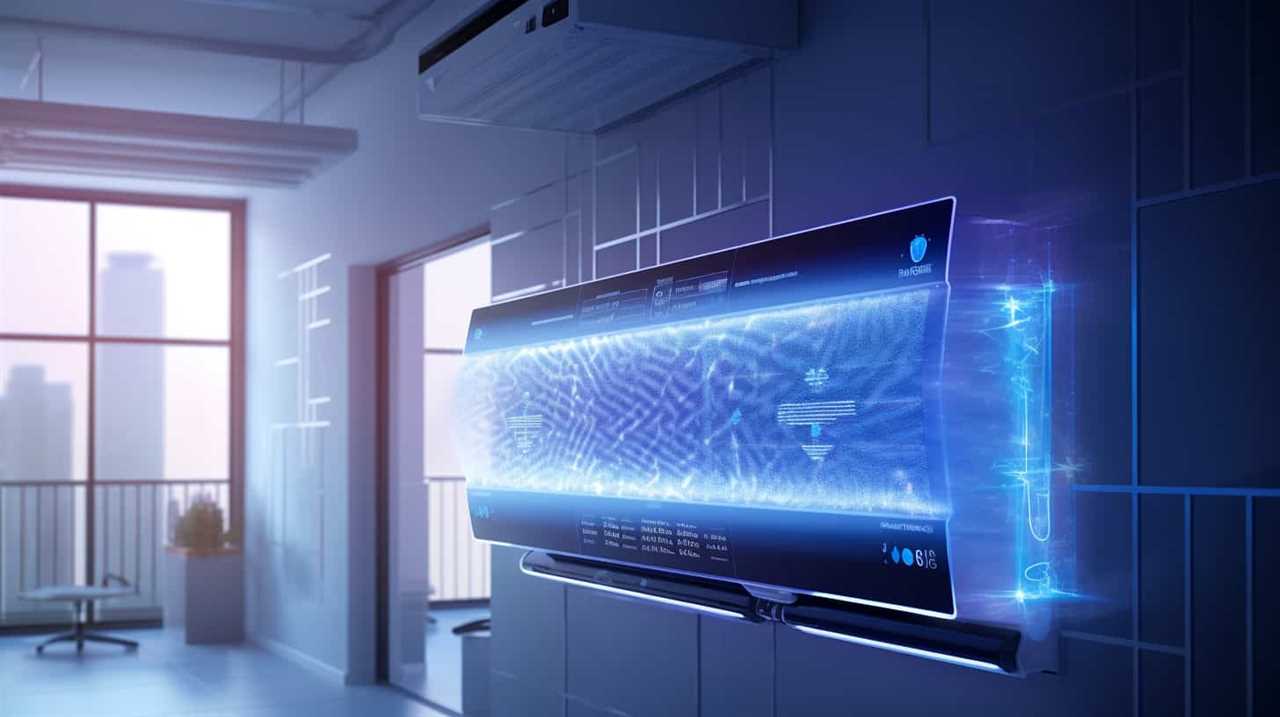
One such technology is the variable-speed compressor, which allows the heat pump to adjust its output based on the heating or cooling demand. This not only improves energy efficiency but also reduces wear and tear on the system.
Another technology is the use of advanced refrigerants with lower global warming potential, such as hydrofluoroolefins (HFOs) or natural refrigerants like carbon dioxide. These refrigerants have better thermodynamic properties, resulting in higher efficiency and lower environmental impact.
Additionally, advanced heat exchanger designs, such as microchannel heat exchangers, can improve heat transfer efficiency and reduce the size of the heat pump unit.
Frequently Asked Questions
What Are the Different Types of Heat Pump Refrigeration Cycles?
We compared the efficiency and energy consumption of different heat pump refrigeration cycles. These cycles vary in their ability to transfer heat effectively, resulting in varying levels of efficiency and energy usage.
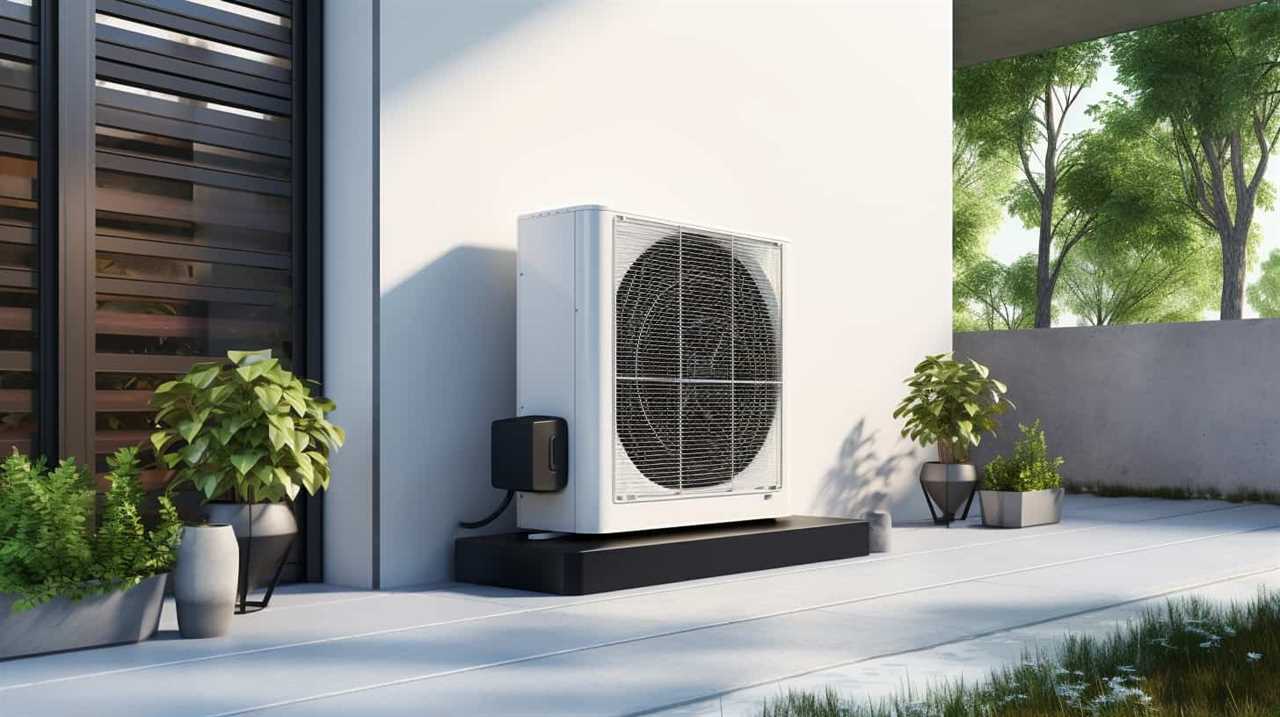
How Does the Efficiency of a Heat Pump System Change With Different Types of Evaporators?
The efficiency of a heat pump system can be dramatically impacted by different evaporation techniques. The design of the evaporator plays a crucial role in determining how effectively the heat pump can transfer heat.
What Factors Affect the Performance of Compressors in Heat Pump Refrigeration Cycles?
Factors such as temperature, pressure, and refrigerant properties significantly impact the performance of compressors in heat pump refrigeration cycles. By optimizing these factors, we can enhance the efficiency and overall performance of the system.
How Do Condensers Contribute to the Overall Efficiency of a Heat Pump System?
Condensers play a crucial role in heat pump efficiency. Proper condenser design is important for optimal heat transfer, and condenser size impacts overall efficiency. These factors must be considered when evaluating heat pump systems.
What Role Do Expansion Valves Play in the Operation and Efficiency of Heat Pump Systems?
Expansion valves play a crucial role in heat pump systems by regulating the flow of refrigerant. They control the pressure and temperature during the expansion process, optimizing efficiency and ensuring proper operation of the system.

Conclusion
In conclusion, the exploration of various heat pump refrigeration cycles has provided valuable insights into improving efficiency.
By understanding the role of evaporators, compressors, condensers, expansion valves, and refrigerants, we can optimize the performance of heat pump systems.
Additionally, comparing single-stage and multi-stage cycles and exploring advanced technologies opens up new possibilities for achieving greater efficiency.
The intricate interplay of these components paints a precise picture of how to enhance heat pump effectiveness.
